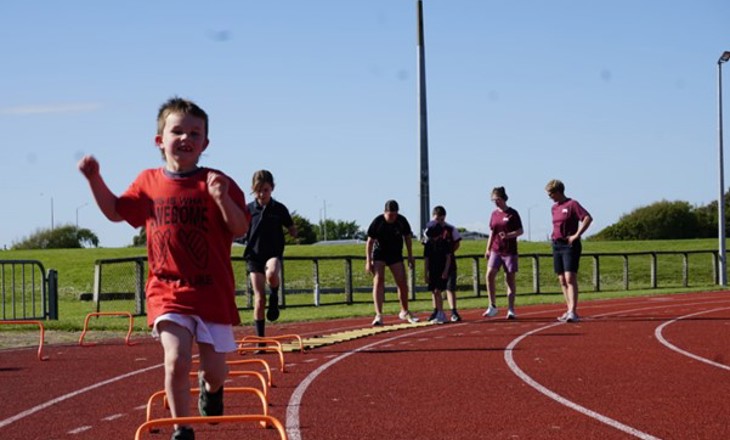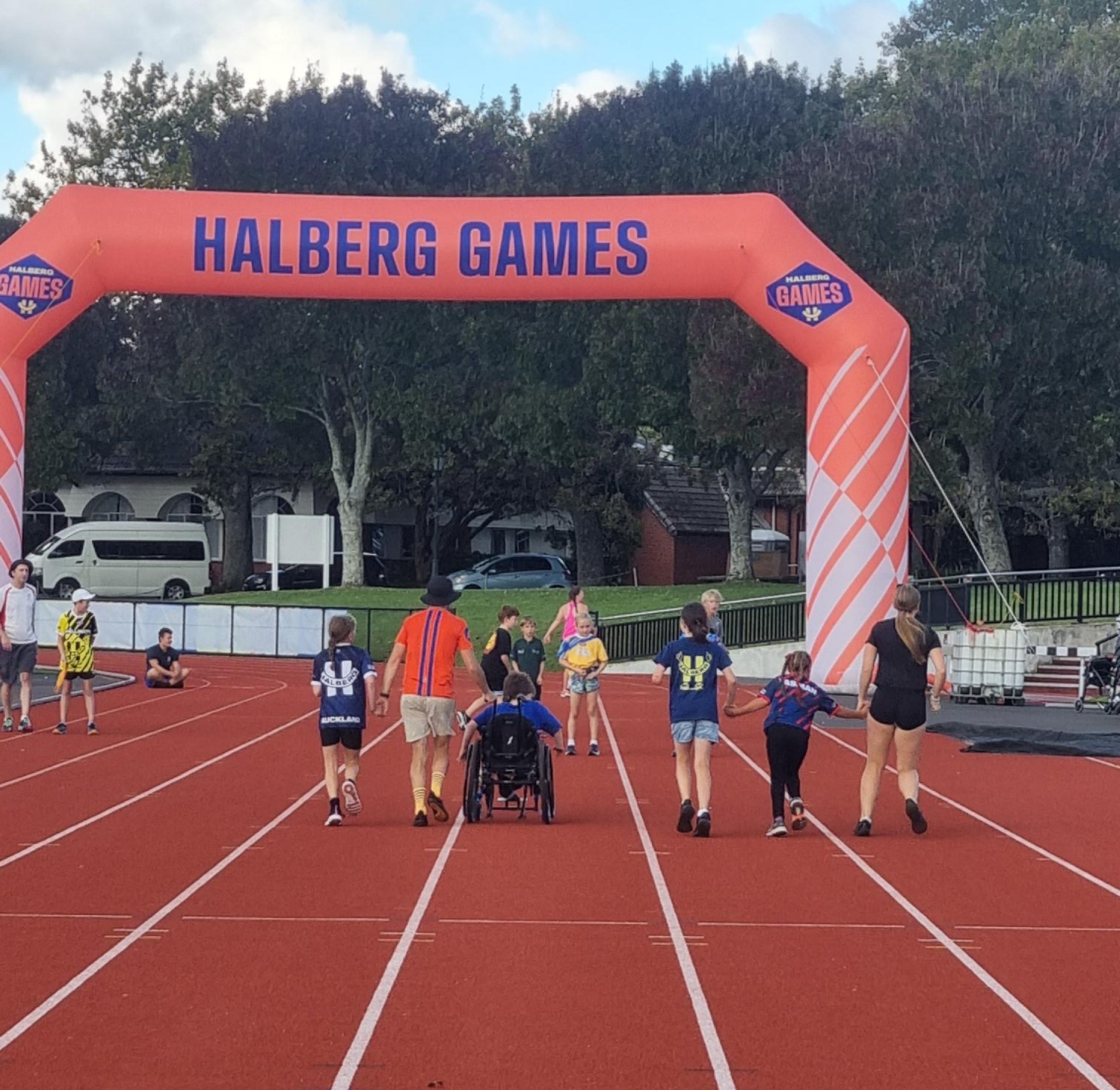Opening the track for disabled young people in athletics
Opening the track for disabled young people in athletics
Disability Inclusion Fund

George, a young disabled athlete from Otago, loves going to his athletics sessions. His mum Suzanne says their local club has supported George from the moment he showed interest in the sport.
“Since day one, they’ve made an effort to include him and make him feel welcome. George loves going along to his sessions. He’s a busy boy and we just love seeing him have a great time,” she said.
North Otago Athletics Club wanted to make sure George had the best experience possible. So they called in Paralympian Holly Robinson to help. Holly teamed up with George and the club to offer practical ideas and fresh perspectives – all part of Athletics New Zealand’s hands-on approach to supporting inclusion at a grassroots level.
These kinds of experiences are becoming more common across athletics, but it hasn’t always been this way.
Just a few years ago, Athletics New Zealand believed it was already inclusive of disabled athletes. However, a nationwide survey of clubs and members revealed a different story.
“When I dug into the results, it was surprising to learn we weren’t as inclusive as I thought,”
The findings showed that many people were unsure how to support disabled athletes.
“Things like language, terminology, body language and understanding Para classifications and rules, and how to integrate Para and non-Para disciplines, were all challenges people were having,” says Raylene.
Determined to do better, Athletics New Zealand applied for support from Sport NZ’s Disability Inclusion Fund to develop strategies and programmes that would close the gap and build a sustainable foundation for inclusion.

Since then, they’ve made big strides. They developed a Para athletics handbook with competition rules, coaching support and information on disciplines like wheelchair racing and seated throwing. They also created a programme called Run, Jump, Throw, which helps coaches adapt games, exercises and movement patterns for different impairment types.
A key focus has been increasing participation and creating positive experiences for disabled young people. At times, that meant bringing in experts to show what’s possible. At other times, it was about giving clubs the tools and confidence to make inclusion part of everyday practice.
Thanks to the Disability Inclusion Fund, Athletics New Zealand has seen more disabled athletes taking part in events like the Halberg Games, Colgate Games and New Zealand Secondary Schools competitions, which now include Para categories.
Madeline from Southland is one of many young athletes thriving in the programme. She recently competed in the Colgate Games, building her skills and confidence along the way.
“I really enjoyed doing athletics and my favourite is the long jump. I liked learning new things so I could be better at my athletics,” says Madeline.
Reflecting on the journey Athletics New Zealand has had so far, Raylene is optimistic about the future.
“We've come a long way, and we would never have come this far, or got to where we have, if it hadn't been for the Disability Inclusion Fund. Now the challenge is ensuring that it carries on and grows, but we’ve got a great foundation to do it from.”
